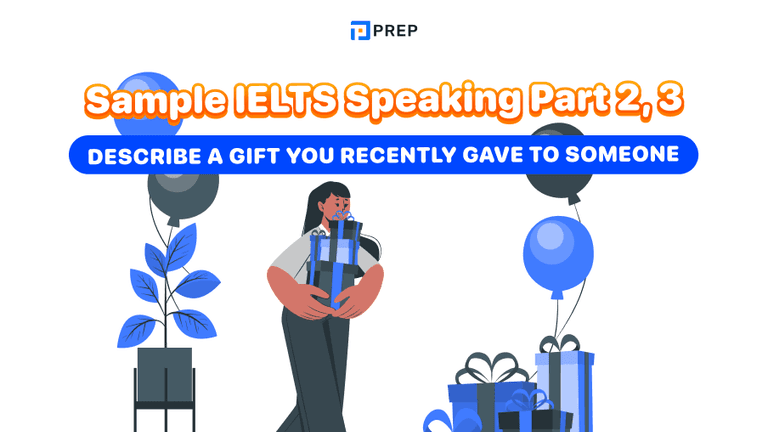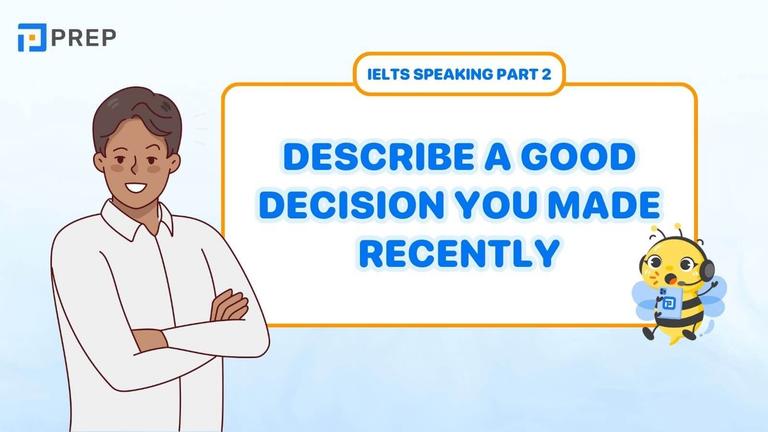6 Key IELTS Listening Question Types: Guide to Higher Scores
This guide breaks down the six essential IELTS Listening question types, transforming test-takers from passive listeners into strategic performers. It methodically analyzes Multiple Choice, Matching, Map Labelling, Completion Tasks, Sentence Completion, and Short Answer questions, providing specific strategies and highlighting common pitfalls for each type.
The article emphasizes cognitive skills unique to each format—from distinguishing subtle distractors in Multiple Choice to spatial visualization in Map Labelling. It identifies paraphrase recognition as the foundational skill underpinning success across all question types. The guide concludes with universal strategies like active prediction and maintaining focus throughout the test.
- I. Why Understanding IELTS Listening Question Types Unlocks Your Scoring Potential
- II. Multiple Choice Questions: Navigating Options for Accurate Answers
- III. Matching Questions: Precision in Connecting Information
- IV. Plan, Map, & Diagram Labelling: Visual-Spatial Listening Mastery
- V. Completion Tasks (Form, Note, Table, Flow-Chart, Summary): The Art of Detail Accuracy
- VI. Sentence Completion: Ensuring Grammatical and Factual Precision
- VII. Short Answer Questions: Delivering Concise, Correct Information
- VIII. Universal Listening Strategies: Boosting Your Score Across All Question Types
- IX. From Knowledge to Mastery: Your Final Steps to IELTS Listening Success
I. Why Understanding IELTS Listening Question Types Unlocks Your Scoring Potential
The IELTS Listening test often triggers anxiety in even the most prepared candidates. This apprehension diminishes when you thoroughly understand what you'll face. The test comprises four progressive sections that increase in complexity, each featuring different question formats designed to evaluate various listening competencies.
Knowledge of these IELTS Listening question types transforms you from a passive listener into a strategic test-taker. When you recognize a multiple choice question instantly or understand how to approach a map labelling task, you gain valuable seconds and mental clarity. This familiarity enables you to deploy specific techniques tailored to each question type, dramatically improving your performance across all sections of the IELTS Listening test.
II. Multiple Choice Questions: Navigating Options for Accurate Answers
Multiple Choice Questions (MCQs) appear frequently throughout the IELTS Listening test. These IELTS Listening question types present either single-answer selections or multiple-answer formats where you must identify more than one correct option. MCQs primarily assess your ability to comprehend main ideas, extract specific details, and interpret speakers' opinions or attitudes.
-
Task Identification:
When confronting an MCQ, immediately determine whether it requires one or multiple answers. Review the question stem carefully, as it indicates what information you need to listen for. Multiple Choice questions often contain subtle clues about when the relevant information will appear in the recording.
-
Core Strategies:
Before listening, analyze both question stems and answer options thoroughly. Identify key nouns, verbs, and adjectives that signal important content. Anticipate synonyms and paraphrases since the recording rarely uses identical wording to the options.
-
Read all options carefully before the audio begins
-
Underline keywords in both question and options
-
Predict likely synonyms and paraphrases
-
Note whether you need one or multiple answers
While listening, focus on understanding the overall meaning rather than matching individual words. Train yourself to identify paraphrases of the correct options and actively eliminate distractors. For IELTS Listening question types, which require multiple selections, track all potentially correct answers simultaneously.
-
Common Pitfalls:
MCQs contain deliberately constructed "distractors" — options that sound plausible but contain subtle inaccuracies. Avoid selecting answers based solely on word-spotting without understanding the context. Many test-takers misinterpret the scope of questions, selecting options that were mentioned but don't actually answer what was asked.
III. Matching Questions: Precision in Connecting Information
Matching IELTS Listening question types require you to connect items from two different lists according to information in the recording. These may involve matching speakers to statements, opinions to people, or events to dates.
This question type tests your ability to identify relationships, scan efficiently for connections, and recognize paraphrased information.
-
Task Identification
Matching tasks typically provide a list of options (often labeled with letters) that must be matched with numbered items based on the audio. Some variations include matching speakers to opinions, events to locations, or people to actions.
Success depends on understanding both lists thoroughly before the recording begins.
-
Core Strategies
Before listening, familiarize yourself with both lists completely. Identify keywords in each item that will help you recognize the relevant information when you hear it. Create mental associations between potential matches to facilitate quicker processing during the recording.
While listening, focus on identifying either direct links or strong paraphrases between what you hear and the written options. Adopt a systematic approach: as you hear information related to an item, immediately check the options list for a match, then mark it and move on.
-
Common Pitfalls
Information overload presents a significant challenge in matching IELTS Listening question types. The recording often contains substantial content about each item, making it difficult to retain all details.
Another common error involves confusion from similar-sounding or semantically related but incorrect options. Develop the discipline to cross off options as they're used to prevent repeated matches.
IV. Plan, Map, & Diagram Labelling: Visual-Spatial Listening Mastery
Labelling tasks involve identifying locations or features on plans, maps, or diagrams. These questions uniquely challenge your ability to understand spatial language, follow directions, and correlate audio information with visual elements.
These IELTS Listening question types typically appear in Section 2 or 4 of the test, often involving public places, academic settings, or process diagrams.
-
Task Identification
Labeling IELTS Listening question types provide a visual representation with numbered blank spaces that you must complete based on the recording. You'll need to understand directional language (north, south, beside, opposite) and visualize spatial relationships as described by the speaker.
The visual aid serves as both your answer sheet and a crucial context provider.
-
Core Strategies
Before listening, orient yourself with the visual thoroughly. Identify known landmarks, compass directions, and reference points that speakers might use. Predict the likely information flow based on the numbering of the blank spaces of these IELTS Listening question types, as speakers typically follow a logical progression through the visual.
Mastering Map and Diagram Tasks:
-
Familiarize yourself with the entire visual before the audio begins
-
Identify key reference points, directions, and landmarks
-
Note the numbering sequence - it often indicates information flow
-
Pay attention to compass directions if shown (north, south, east, west)
-
Practice understanding spatial prepositions (adjacent to, opposite, between)
While listening, maintain constant visual reference to the diagram. Focus on directional language and spatial relationships to track movement across the visual. Connect audio cues to visual features immediately, marking your answers as precisely as possible within the spaces provided.
-
Common Pitfalls
Many test-takers become disoriented when following complex directions, especially when speakers change perspective or reference point. Misinterpreting prepositions of place and movement (between, across from, adjacent to) frequently leads to errors.
Practice with diverse visual materials to strengthen your spatial listening comprehension and direction-following abilities.
V. Completion Tasks (Form, Note, Table, Flow-Chart, Summary): The Art of Detail Accuracy
Completion tasks encompass various formats where you must fill in missing information within an organized structure. These IELTS Listening question types include forms, notes, tables, flow-charts, and summaries.
This family of questions examines your ability to identify specific details, understand organizational structures, maintain accurate spelling, and adhere to word limits.
-
Task Identification
Completion IELTS Listening question types provide partially completed documents with gaps you must fill based on the recording. Different sub-types (forms, notes, tables, flow-charts, summaries) present unique structural challenges, but all require precise identification of missing information. Instructions typically specify a word limit (often 1-3 words), which you must strictly follow.
-
Core Strategies
Before listening, read the completion task thoroughly, paying special attention to word limit instructions. Predict the grammatical type of answer required for each gap (noun, verb, number, etc.) based on surrounding context. Underline keywords before and after each gap to help locate relevant information in the recording.
Key Steps for Completion Tasks:
-
Review and understand the overall structure (form, table, flow-chart, etc.)
-
Note the exact word limit (typically 1-3 words)
-
Predict what type of information is missing (names, numbers, actions)
-
Identify surrounding context clues that signal when answers will appear
-
Check answers fit grammatically with surrounding text
While listening, focus on identifying exact words or direct paraphrases that complete the missing information. Pay careful attention to spelling, especially for proper nouns, technical terms, and numbers. Note plurals and grammatical forms precisely as they apply to each gap.
After the recording ends, verify that all your answers adhere to word limits, demonstrate grammatical consistency with surrounding text, and maintain correct spelling.
-
Common Pitfalls
The most frequent errors of these IELTS Listening question types involve exceeding word limits or including unnecessary articles and prepositions. Spelling mistakes and incorrect grammatical forms (singular/plural, verb tense) commonly cost points.
Many candidates also write paraphrases when the exact words from the recording are required. Practice extracting precise information within word limits to develop this crucial skill.
VI. Sentence Completion: Ensuring Grammatical and Factual Precision
Sentence completion IELTS Listening question types present partially finished sentences with gaps you must complete using information from the recording. This format tests your comprehension of sentence structure, grammatical relationships, detail recall, and paraphrasing abilities.
Your answers must be both factually accurate and grammatically compatible with the sentence structure.
-
Task Identification
These IELTS Listening question types provide incomplete sentences with blanks, sometimes with a word limit specified. Your task involves identifying information that both factually answers the question and fits grammatically within the sentence structure.
This format appears throughout the test but is particularly common in academic sections.
-
Core Strategies
Before listening, analyze each incomplete sentence to predict the type of missing information (noun phrase, verb, adjective, etc.) and its grammatical requirements. Underline keywords surrounding the gap to help pinpoint when the relevant information will appear in the recording.
While listening, identify information that satisfies both the factual content needed and the grammatical requirements of the sentence. Be particularly aware of paraphrasing, as the recording often expresses the required information using different words than those in the sentence.
-
Common Pitfalls
For these IELTS Listening question types, grammatical mismatches constitute the most common error in sentence completion tasks. Test-takers frequently select information mentioned in the recording but fail to adapt it to fit the sentence structure.
Another frequent mistake involves choosing information that was discussed but doesn't properly complete the specific context of the sentence. Regular practice with sentence completion exercises enhances your ability to identify grammatically compatible answers quickly.
VII. Short Answer Questions: Delivering Concise, Correct Information
Short Answer IELTS Listening question types require you to respond to direct questions with specific, concise answers. These questions test your ability to extract precise facts, express information concisely, and follow strict instruction parameters. Answers typically must adhere to a specified word limit, usually between 1-3 words.
-
Task Identification
Short Answer IELTS Listening question types appear as direct interrogatives, often beginning with "Wh-" words (What, Where, When, Who, Why, How). Instructions specify the maximum number of words permitted for each answer.
These questions frequently appear in Sections 1 and 3 of the test, targeting factual information rather than opinions or inferences.
-
Core Strategies
Before listening, identify the question word carefully, as it indicates the type of information required (e.g., "When" signals a time or date; "Where" indicates a location). Note the word limit exactly and prepare to extract only the essential information.
While listening, focus specifically on the answer to the question posed. Train yourself to identify just the core information required rather than surrounding context or explanation. Jot down key words quickly, then refine your answer to fit the word limit precisely.
-
Common Pitfalls
Exceeding the word limit represents the most frequent error in Short Answer Questions. Many test-takers include unnecessary articles, prepositions, or additional context that pushes them over the limit.
Another common mistake for these IELTS Listening question types involves including correct but tangential information that doesn't directly answer the specific question asked. Misspelling answers, particularly names, places, and numbers, also costs many candidates valuable points.
VIII. Universal Listening Strategies: Boosting Your Score Across All Question Types
Beyond question-specific techniques for each IELTS Listening question types, certain universal strategies enhance performance across all IELTS Listening question formats. These approaches strengthen your fundamental listening abilities while maximizing your test performance potential.
-
Active Prediction
Prediction serves as perhaps the most powerful universal strategy. Before each recording begins, actively anticipate what you might hear based on the question context.
Consider likely speaker roles, situations, vocabulary, and information types. This mental preparation primes your brain to recognize relevant information instantly when it appears in the recording.
-
Mastering Paraphrase
IELTS Listening deliberately tests your ability to recognize meaning expressed in different words. Train yourself to understand concepts rather than simply matching vocabulary.
Common Paraphrasing Techniques to Recognize:
-
Synonyms (enormous → massive, essential → crucial)
-
Negative/positive reformulations (didn't remember → forgot)
-
Active/passive voice shifts (The company employs 50 people → 50 people are employed by the company)
-
Part of speech changes (difficulty → difficult, successful → succeed)
-
Generalizations and specifications (Toyota → Japanese car, vegetables → broccoli)
Regularly practice identifying ideas expressed through synonyms, alternative phrasing, and restructured sentences. This skill proves particularly valuable for multiple choice and matching questions where options rarely use identical wording to the recording.
-
Strategic Pacing & Focus
Maintain forward momentum throughout the test. If you miss an answer, make an educated guess and immediately refocus on upcoming questions.
Dwelling on missed information creates a dangerous cascade effect where multiple subsequent answers are compromised. Develop the mental discipline to maintain concentration even after difficult sections, treating each new question as a fresh opportunity.
Test-Day Mental Management:
-
Stay present - focus only on the current section
-
If you miss an answer, immediately refocus on the next question
-
Use the short pauses between sections to reset mentally
-
Remember all sections count equally - excel where you can
-
Use the 10-minute transfer time strategically to review answers
IX. From Knowledge to Mastery: Your Final Steps to IELTS Listening Success
The IELTS Listening question types explored here function synergistically during your preparation. Improvements in one area naturally enhance performance in others as your overall listening comprehension strengthens. Your familiarity with each format removes the cognitive burden of figuring out what to do, allowing you to focus entirely on understanding content.
Success in IELTS Listening emerges from consistent, reflective practice rather than last-minute cramming. Apply these strategies methodically, analyze your errors thoughtfully, and gradually build the confidence that transforms knowledge into mastery. Remember that familiarity breeds competence—the more you practice with these IELTS listening question types, the more automatically you'll deploy the right strategies at the right moments during your actual test.

Hi I'm Chloe, and I am currently serving as an Product Content Administrator at Prep Education. With over five years of experience in independent online IELTS study and exam preparation, I am confident in my ability to support learners in achieving their highest possible scores.











